|
You may notice a new link in the top left corner of this page: the New Artillery band and album index. While I cringe thinking that it is still in progress, this page is the result of hours of very tedious indexing. You can now link directly to any of the albums, shows, or books I’ve written about since 1/1/2009. Over 200 of them.
Older entries will soon be added to the index, but many of those require a certain level of stylistic and functional polish that will take longer. I’m also planning on redesigning the site sometime this fall. Lucky me.
|
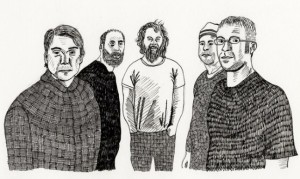
A few years ago I postulated that there are three potential favorite albums for Built to Spill fans, and each selection says something about your general musical taste. 1994’s There’s Nothing Wrong with Love is the logical choice for anyone leaning toward indie pop (which includes the majority of female Built to Spill fans I’ve met). The layered guitar epics of 1997’s Perfect From Now On are tailor-made for insular dudes like yours truly who prefer Doug Martsch as the new J. Mascis. Finally, 1999’s Keep It Like a Secret appeals to those searching for a middle ground between the earnest pop and the guitar heroism. While I have my obvious preference, they’re each highly recommended.
The rub for my theory is that Built to Spill has since recorded three more albums (and started out with Ultimate Alternative Wavers, but come on, don’t be a jerk). Is it possible that someone could choose Ancient Melodies of the Future as their favorite Built to Spill album? Certainly. Stranger things have happened. But if I start talking with someone and they reveal that Ancient Melodies is their favorite Built to Spill album, I may very well walk away before they continue to share their preferences for Pavement’s Terror Twilight, Polvo’s Shapes, and Seam’s The Pace Is Glacial. Unless that is the first (and possibly only) Built to Spill album they’ve heard, it is not a logical choice. You in Reverse and There Is No Enemy are improvements from Ancient Melodies, but I’m not going to wake up one day and prefer any of them to Perfect From Now On.
Here’s my million-dollar question: Which Built to Spill album is Doug Martsch’s favorite? It’s common practice for artists to say “The new album is our best!” because they’re so invested in the process. You can, however, tell how bands feel about their previous work in set lists, especially if they’re touring outside of the context of a just-released or upcoming album. Foals closed their show the night before with three songs from Antidotes. Pavement only played “Spit on a Stranger” from Terror Twilight when I saw them a few weeks back. Shiner almost always pulled out “Semper Fi” and “The Situationist.” Thursday’s Built to Spill show should have demonstrated a similar transparency for Martsch’s preferences on his own material, but I don’t know if I learned anything.
I didn’t write down their set list, but I can remember most of the early songs because I kept Googling them on my iPhone to confirm which of the last three albums they represented. “Traces” from You in Reverse started things off with some somber, mid-tempo guitar interplay. “Reasons” was instantly recognizable as a There’s Nothing Wrong with Love song, although not one of my favorites. The hummable yet slight “Strange” is, in fact, from Ancient Melodies. Martsch tipped off that the cover of Grateful Dead’s “Ripple” was a “non-original,” but its loping pace wasn’t far off from the rest of the set, especially the alt-country tinges of “Hindsight” from There Is No Enemy. “Twin Falls” was a welcome Love representative, short and sweet. “Else” broke the cherry for Keep It Like a Secret roughly 40 minutes into their set. By this point, the languid pace and questionable song selection kept my eyes glued to the running clock at the side of the stage.
There was a slight reward for my patience near the end of the set when “Time Trap” and “Carry the Zero” brought a very noticeable energy to both the band and the audience, but I couldn’t bring myself to stick around for the unearned encore. If I had, I would’ve seen “Car,” “Big Dipper,” and “Untrustable/Part 2 (About Someone Else)” (if this list is accurate). Damn? I left the Paradise knowing full well that Doug and company would bring some of his best songs out for the encore, but why make me wait? In a set low on energy, wouldn’t “Goin’ Against Your Mind” be an improvement on “Traces”? Wouldn’t “The Plan” give “Else” a jolt? Wouldn’t “Stop the Show” be welcome? Clearly there must be some reason for this mid-tempo snoozefest.
Here are my theories: 1. They saved the best songs for Friday’s second show at the Paradise. (Some of them, at least: “The Plan,” “Kicked It in the Sun,” even “The Weather.” Saturday’s show in Pawtucket looks like a dream, though.) 2. Doug Martsch likes all of his albums equally. 3. Touring without a new album feels too much like work. 4. Playing Perfect From Now On straight through on a tour two years ago took those songs out of rotation. 5. There isn’t much of a need to one-up the workmanlike indie rock of touring openers Revolt Revolt, friends from Boise. 6. His refusal to discuss his lyrics in interviews and instead only talk about the aesthetic choices or recording process implies a level of detachment from his most resonant material.
The sixth point (in particular) may sound harsh, but think about it: the issue with this show and Built to Spill’s last three albums is that Doug Martsch is that what makes the band great is being rationed. Martsch may be fine with that. It was easy to say what’s great about TNWWL, PFNO, and KILAS. The appeal of certain songs from the last three albums could be summarized so concisely, but none of them is consistently engaged both musically and lyrically.
Seeing streams of Chavez and Sonic Youth’s superb performances from Matador at 21 on Friday night put my disappointment with Built to Spill’s set into perspective. Chavez didn’t play “Wakeman’s Air”—perhaps my favorite of their songs—but every song they did play completely ruled. (Only having two LPs and an EP helps the selection process—sorry, “Little Twelvetoes” fans.) Sonic Youth made a more dramatic decision, playing only “Mote” and “Bull in the Heather” from their 1990s and 2000s albums, choosing instead to load up on classics from EVOL, Sister, and Daydream Nation, then close with “Death Valley ’69.” I could make a four-hour playlist of Sonic Youth songs I wouldn’t want to hear—most of their only Matador LP, The Eternal, for instance—but if I had to narrow them down to an hour-long block, their Friday set might very well have been it.
There’s a good reason why both Chavez and Sonic Youth killed on Friday night—it’s a hell of an occasion and any great band would best bring their a-game. Should I excuse Built to Spill for not having that occasion? That sense of occasion was present for the aforementioned Perfect From Now On coronation tour. They shared the bill with fellow legends in the Meat Puppets and Dinosaur Jr. They played PFNO, “Goin’ Against Your Mind,” and “Car.” I wanted to hear more, but I didn’t blame them for skipping “Carry the Zero.” This show, on the other hand, couldn’t end fast enough.
One final note: it’s even more baffling that this Built to Spill show was so staid when the band has just released a completely unexpected disc of synth-tastic versions of Built to Spill songs like “Goin’ Against Your Mind,” “Else,” and “I Would Hurt a Fly” under the pseudonym Electronic Anthology Project. I might have preferred seeing the band do a few of those versions!
|
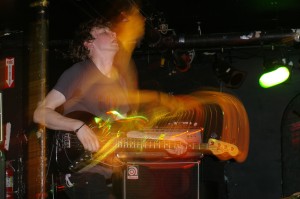
I’ve been meaning to write about Foals’ sophomore LP, Total Life Forever, for months now. It’s an interesting progression from their excellent 2008 debut, Antidotes, which ranked near the top of my best albums for that year. Total Life Forever abandons the prevailing notions that they’re a math-rock band solving equations—notions I never agreed with, given my decidedly American view of that genre with Don Caballero as its despot—and instead applying those Battles-esque guitar patterns to more personal, original material. Foals successfully avoid the sophomore jinx of their dance/post-punk peer Bloc Party, so I was excited to see how new favorites like “Blue Blood,” “Black Gold,” “Spanish Sahara,” and “What Remains” came off live.
Recent Matador signing Esben and the Witch was the lone opener for the show. Even with just a few singles to date, they’ve been lavished with praise and ultra-irritating buzz words like “Balearic” and “witch house.” Their Pitchfork-approved single “Marching Song” is quite good, but unfortunately their live show was a letdown. Their attempt to replicate the subtleties of their recorded output on stage relied (from what I could tell) too heavily on sequencers / tapes to bolster the ghostly vocals, heavily gauzed guitars, and periodic drum circle pounding. There’s a critical difference between staring at a band in awe and thinking “How are they making that noise?” and staring at a band and wondering “Are they making that noise?” When I saw M83 six years ago, there was a similar disconnect—I’d say 50% was pre-recorded, then Anthony Gonzalez and company hyper-strummed their guitars over top of it and made strained faces. I’d rather a band build up their sound from scratch than rely on a tape/drum machine to fill in the gaps. That’s what makes Battles’ live show so engrossing. Esben and the Witch’s songs may rely on an uneasy mystery, but the performances shouldn’t.
Whatever the sources, Esben and the Witch’s ultimate output drifted between the early gothic incantations of the Cocteau Twins, the druggy landscapes of Bardo Pond, and the psychedelic ramblings of Pocahaunted. Cocteau Twins might be the most intriguing comparison, but I thought more of their reliance on a drum machine than any vocal similarity with Liz Fraser. Cocteau Twins got away without having a drummer, but Esben and the Witch kept finding ways to circumvent it—having singer Rachel Davies pound away on a single drum and cymbal, bringing over the other two members for a relatively simply drum circle, bringing in drum machine loops. If they found a patient drummer capable of both tribal force and minimal touches—slowcore drummers like Codeine’s Doug Scharin and Pinebender’s Dennis Stacier come to mind—the other three members can focus on filling in the gaps of their sound. It may even be the case that less would be more for their haunted soundscapes. A work in progress in either case, but that should be expected from a band without a full-length.
All of this criticism is predicated upon the still-standing notion that “Marching Song” is worth hearing when Matador releases a 12” of it on October 12 in the United States. Its atmosphere is far more carefully cultivated on record, and the lengthy b-side “Souvenirs” stretches its echoes out to chilling effect. I can’t recall the last time I disliked a band’s set but still wanted to hear their recorded material, so Esben and the Witch isn’t a lost cause by any means. You can also catch them at Matador at 21 this weekend, you know, if you’re a total jerk and got tickets to the shindig.
Unlike Esben and the Witch, Foals’ songs are designed for the live setting. There’s no studio trickery or Line Six pedals behind their interlocking pieces, only quick fingers and strong foundations. Singer/guitarist Yannis Phillipakis’s idiosyncratic stage presence and hairstyle may get the brunt of the attention, but bassist Walter Gervers is their secret weapon. The slippery basslines of “Blue Blood” and “Total Life Forever” validate the Talking Heads comparisons, while the simpler lines for Antidotes singles “Cassius” and “Balloons” anchor the group’s trademark high-fretboard noodling. Between Gervers and solid drummer Jack Bevan, Foals are built from the back-end.
Foals’ set covered both albums with an emphasis on Antidotes. “Blue Blood” opened the show with a slight lack of energy, which was the case for a few of the Total Life Forever songs—the mellow ballad “2 Trees,” the languid beginning of “After Glow” in particular. These lulls confirm that the back end of Total Life Forever sags in spots and it may take more gigs for the group’s new range to translate live. The mesmerizing arc of “Spanish Sahara,” the album’s seven-minute advance single, proves it can happen. (Even acoustically!) Less surprisingly, the Duran Duran energy of “Miami” and Talking Heads funkiness of “Total Life Forever” each thrived on stage. I give them full points for skipping current single (and album weak point) “This Orient,” but “What Remains” and “Black Gold” would have been wise choices.
Antidotes may have less original songwriting than Total Life Forever, but Foals absolutely own those earlier songs on stage. Practice made perfect for the four prominent singles from Antidotes, since “Cassius,” “Balloons,” “Olympic Airways,” and “Red Sock Pugie” more than made up for the lulls. Foals continue to tweak these songs by extending outros and honing riffs. The percussive violence of “Electric Bloom” ended the main set, then the encore contained two more Antidotes favorites. “The French Open” hit a noticeably higher volume at its peak, while the precision tuning of “Two Steps, Twice” became epic as Yannis found his way up to the balcony of the newly renovated Paradise and then, rather suddenly, over it, returning to the stage to cue the song’s climax.
It makes sense logistically for these bands to tour together—they’re both English, Esben and the Witch get exposure early in their career without having to headline, Foals get associated with a stylistically disparate act gaining critical appeal—but the difference in approach still baffles me. Call me a rockist dinosaur all you want, but I enjoy seeing bands pull it off. Foals certainly do just that, nailing every instrumental trick, but more importantly, they surpass the recorded versions of “Spanish Sahara,” “Balloons,” and “Two Steps, Twice.” Merely replicating your recorded material is worth seeing once. (Ahem, Pelican.) Continuing to evolve it is worth repeat engagements. Esben and the Witch are much earlier in that process, but evolving your songs before being able to pull them off seems like a recipe for amorphous disaster.
|
The Depreciation Guild – Spirit Youth LP – Kanine, 2010 – $10 (Harvard Sq. Newbury Comics, 9/17)
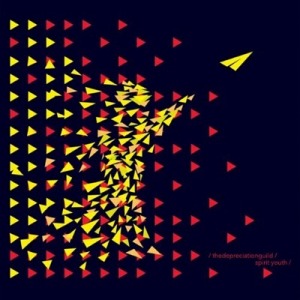
Built on a Weak Spot tipped me off to the Depreciation Guild and their 2010 LP Spirit Youth back in May, but it took me a while to stop dipping my toes in the pool and finally dive in headfirst. The Depreciation Guild has been lumped into the ever-expanding class of nu-gaze groups, but there’s a welcome classicism to their sound. Their influences stretch beyond holy triumvirate of My Bloody Valentine, Ride, and Slowdive to incorporate the C86/twee/indie pop that blurred with shoegaze in the late ‘80s and early ‘90s both in England (The Darling Buds) and the US (Velocity Girl). This relationship was standard operating procedure back then, but nu-gaze—a so-bad-it’s great genre title I can’t stop myself from using—has asked for some time apart.
I usually don’t complain about that temporary separation, since I love the pummeling muscularity of A Place to Bury Strangers, the math-rock trappings of The Life and Times, and the post-metal textures of Jesu, but the Depreciation Guild’s sugary vocal hooks make a perfect pair with ample doses of glide guitar. (M83 used to claim this territory, but Anthony Gonzalez’s fixation on John Hughes movies led him astray.) They’re bolstered by the occasional appearance of 8-bit electronics, most noticeable on the intro to opening track “My Chariot,” but this chiptune aesthetic never overwhelms Spirit Youth. Instead, the Depreciation Guild manages to sound simultaneously modern and retro, updating shoegaze without losing its original charm.
This precise balancing act extends to Spirit Youth as an album. The C86 side comes out most clearly in the up-tempo “My Chariot” and “Crucify You,” but tornado winds of guitar in “November,” “Through the Snow,” and “White Moth” assuage any cringing twee-haters. Given the Depreciation Guild’s association with The Pains of Being Pure at Heart—singer/guitarist Kurt Feldman plays drums in the latter, guitarist/singer Christoph Hochheim joins Pains on tour as a guitarist—one might expect more of an emphasis on the vintage indie pop, but Spirit Youth never loses sight of either side.
The Depreciation Guild is currently on tour—followed by a tour by their aforementioned brother band The Pains of Being Pure at Heart. I’m looking forward to catching them at T.T. the Bear’s tomorrow night and seeing if their stage presence is as classically informed as their sonics. If you’re stuck at home, you can check out the first product from Kurt Feldman’s similarly titled gaming company, The Depreciation Guild, Inc. TileWild is an appropriately retro-futuristic puzzle game for the iPhone. Hopefully it's as fun as Spirit Youth.
|
The For Carnation – The For Carnation LP – Touch & Go, 2000 – $28 (eBay, 7/22)
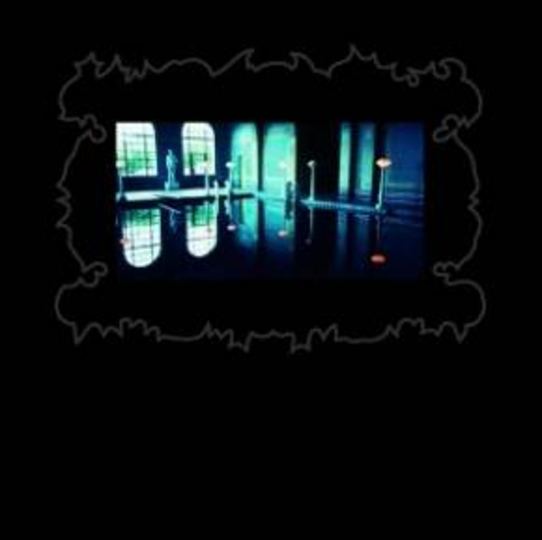
It took me until 2010 to finally appreciate The For Carnation’s self-titled LP. Much like the group’s two previous releases, 1995’s Fight Songs EP and 1996’s Marshmallows, very little happens on The For Carnation. Those hoping for the climactic catharsis of Slint’s “Washer” and “Good Morning, Captain”—the two most physically jarring examples of Spiderland’s brilliance—encounter no dramatic crescendos in The For Carnation’s catalog, only carefully pruned plateaus of superhuman patience. The most dramatic moment on any of these releases comes on Fight Songs’s “Grace Beneath the Pines” when McMahan’s quietly spoken vocals become uncomfortable loud with the line “with crack heads and assassins and burn victims” before mumbling his way into the closing “and millionaires' sons.” There’s no incisive harmonic riff accompanying this peak, only a single strummed chord, far from the bombastic payoff of Slint’s high-water marks. For a band relying on patience, The For Carnation had worn mine thin by Marshmallows.
It certainly didn’t help that Slint’s offspring—Mogwai and Godspeed You! Black Emperor in particular—reveled in the dynamic range that The For Carnation had left behind. The immediacy of a distorted guitar climax is hard to deny. Yet as the thrill of those rollercoaster rides became commonplace by Godspeed’s demise and Mogwai’s descent into routine, I should have recognized that The For Carnation offered a crucial aspect of Slint’s legacy that had gone all-but-ignored in the formation of post-rock’s playbook: Brian McMahan’s engrossing storytelling.
This emphasis on storytelling is certainly not the sexiest or the most earth-shattering element of Slint’s success, but as Scott at Pretty Goes with Pretty (the author of the upcoming 33 1/3 on Spiderland, an honor which fills me with envy) eloquently puts it, Slint “earn[s] its drama,” and I’ll fill in the gap by saying that the storytelling is a big part of how they earn it. He mentions how “Don, Aman” thrives on “a palpable sense of foreboding and anxiety, both lyrically and musically.” It’s precisely that mood that The For Carnation explores. Each track, ranging from 5:36 to 9:29, plots a measured course through dimly lit wilderness, and five of the six are driven by McMahan’s involving storytelling.
I’ll focus on closing track “Moonbeams,” since it finally broke my decade-long mental block with The For Carnation. The musical backdrop is deceptive; built upon a lyrical bass line, a skeletal drum beat, intermittent guitar phrases, a cricket-like electronic whirr, and a haunting piano loop buried in the mix, it initially recalls the austerity of Marshmallows, but Christian Fredrickson’s (of Rachel’s) string arrangements add melodrama-free depth. It would make a worthy instrumental, but McMahan’s lyrics provide the song’s anxious tension. The opening couplet “Scatter the roots of our passage tonight / Discard the memories we chose to survive” hints at the song’s elliptical narrative, which only grows more confounding with each verse. The second verse offers, “When she was five years old there’s cake and bright lights / and when she was ten she became the maid’s bride.” The third turns the pronoun back around—“Stand up and face it although you’re half dead / Try to remember though they’ve taken your head”—then becomes inclusive: “Why we sleep fully dressed and rise only from bed / Who did this to us? Who did this to us?” Each softly sung line in “Moonbeams” resonates exponentially over the eerie landscape. (Taking ten seconds in between lines certainly helps that effect.) Piecing together a concrete narrative like the carnival trip of Slint’s “Breadcrumb Trail” from these disparate mental images is impossible—McMahan closes the song with “I climb to the top and I find where I am,” but he doesn’t pass along the coordinates. “Moonbeams” evokes (and occasionally invokes) a dream world of intangible unease. And the best part? You’re stuck there.
That’s the notion that took me so long to grasp: The For Carnation’s greatness lies in their staunch unwillingness to break the tension, to provide the natural release of a “Washer” or a “Good Morning, Captain.” “Tales [Live from the Crypt]” comes the closest, teetering precariously on the slashing guitar chords that might trigger an avalanche of noise, but it never topples. A decade ago I would have bellowed for chaos in this moment, but now I recognize how the convergence of all of the song’s instrumental tensions is better left with the threat partially revealed but not engaged or eliminated. Almost nothing happens, after all, but the desire for a break in the tension is transformed into a need.
The For Carnation is loaded with potential contradictions. Its sonic plateaus might encourage placement in your bedtime listening pile, but the songwriting demands foreground listening. It seems austerely minimal, but the attention to detail is astonishing. (Having guest performances from Kim Deal, Rachel Haden, Britt Walford, and John McEntire, among others, certainly helps.) It’s the closest companion album for Slint’s Spiderland, even if it casts aside that album’s most exciting moments. It’s one of the finest post-rock albums of the decade, even though it ignored the prevailing trends of the genre, specifically instrumental songwriting and noisy climaxes. A more accurate statement is that it’s one of the finest post-rock albums of the decade because it ignores those trends.
|
Tarentel – We Move Through Weather 2LP – Temporary Residence, 2004 (9/17 Charlie Wagner)
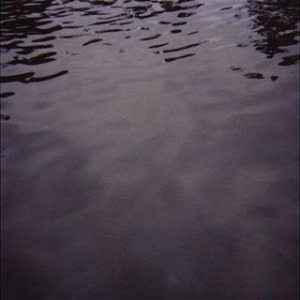
Hearing this album again in the midst of my deep-dive into Mogwai’s discography makes me wonder if I chose the wrong group to spotlight. Tarentel received comparisons to Mogwai when 1999’s From Bone to Satellite was released, which both made sense—both groups plied their trade in guitar-centric post-rock—and sold Tarentel’s emerging drone and ambient tendencies short. Whereas Mogwai’s more recent albums are essentially a refinement of their 1999 release, Come on Die Young, Tarentel’s much more severe evolution has laid waste to the careful arrangements and distorted build-ups of From Bone to Satellite. I personally prefer the more familiar terrain of From Bone to Satellite and the superb compilation Ephemera to Tarentel’s later, more challenging work, but the elegant atmosphere of 2001’s The Order of Things, the rhythmic drone of 2004’s We Move Through Weather, and the psychedelic blur of 2007’s Ghetto Beats on the Surface of the Sun each offer a decidedly different take on Tarentel.
If each of these releases sounds like the product of a different band, that’s not entirely off-base. Only Jefre Cantu-Ledesma and Danny Grody remain from the Satellite line-up for We Move Through Weather, with the prolific Kenseth Thibodeau having departed for projects like Sleeping People, Howard Hello, and Prints. Two of the additions signal changes in Tarentel’s sonic profile, since Tony Cross is credited with violin, waterphone, and hydrophone, while Steve Dye is credited with bass clarinet, clariphone, flubaphone, gankogui, and double ski horn (some of which are custom-made instruments). Former Sonna drummer Jim Redd makes the biggest difference, since his bustling tribal rhythms are pushed up front for “Bump Past, Cut Up Through Wind,” “A Cloud No Bigger Than a Man’s Head,” and “Hello! We Move Through Weather.”
If you’re hoping to hear “For Carl Sagan, Part Two,” look elsewhere. This emphasis of droning horns and tribal rhythms over discernible guitar figures distances We Move Through Weather from both From Bone to Satellite and The Order of Things. Melody is hard to come by, with the minimal piano work of “Bump Past” and “We’re the Only Ghosts Here” providing welcome exceptions to this rule. Instead, We Move Through Weather turns its countless instrument credits into a disorienting fog with few paths out. Specifying the title not as “We’re moving through this cloud” but “We’re moving through use of this cloud” clarifies things slightly, but We Move Through Weather does not value clarity.
I’ll return to my original thought on whether Tarentel Discographied would be more rewarding than Mogwai Discographied with an epiphany: Tarentel’s discography is already set up perfectly for a chronological exploration. You start with the structured post-rock of From Bone to Satellite, which presumably appeals to the widest audience. If you’re still interested, Ephemera collects a number of rewarding variations on this template. Next, you cast aside the crescendos for the ambient The Order of Things. Like to take that ambience a step further? Get weirder? Try out the miasmic We Move Through Weather. Still on board? Well, Tarentel’s got four twelve-inches of drifting psychedelic fuzz for you with Ghetto Beats from the Surface of the Sun. It’s hard to extract a single, monumental song from We Move Through Weather to use as a signpost of their progress—there’s no “2 Rights Make 1 Wrong” here. Unlike Mogwai, Tarentel don’t have song types like “the vocal slow-core ballad,” “the moody crescendo crasher,” or “the mellow, vaguely electronic breather.” Tarentel doesn’t return to what worked before or improve on past attempts. They just move forward.
|
Nadja – Thaumogenesis 2LP+CD – Important, 2010 [2007] – $26 (Newbury St. Newbury Comics, 5/7)
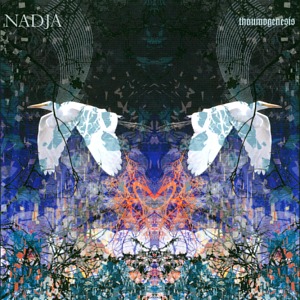
Back in 2007 and 2008 I got sucked into the world of Toronto-based ambient/slow-core/shoegaze/drone/metal (sorry, “metalgaze” makes me cringe and all of these tags fit) duo Nadja, starting with two of their full-lengths, Thaumogenesis and Radiance of Shadows. The latter ended up making my top 20 of 2007, but I was soon inundated with other Nadja releases. With fifteen full-lengths since the group’s inception in 2003 (four of which have been re-recorded and re-released), their level of output shames even the otherwise prolific Jesu, even without mentioning all of their splits/EPs/solo releases. (Okay I’ll mention one: Fantasma Parastasie, Aidan Baker’s collaboration with Tim Hecker, is worth checking out.) The secondary problem with this immense discography is that unlike Guided by Voices, Nadja’s releases are less song-oriented and more based on variations on an aesthetic. Do I enjoy their slow-crawl doom-gaze? Sure. Do I need to hear every permutation of it? Not really. Sensing my burnout with stylistic cousin Jesu’s frantic release schedule and diminishing returns, I decided to pick up just a few key Nadja releases, only to encounter a $38 price tag on the LP of Radiance of Shadows. This site (and this meme in particular) is all about putting your money where your mouth is, but even I have limits.
Thankfully Important Records made my decision a little easier by repressing Thaumogenesis on 2LP with bonuses like a James Plotkin remix, a bundled live CD, and gatefold artwork from Seldon Hunt. The main question was how “Thaumogenesis,” the 61:43 long track that comprises the album, would fit onto three sides of vinyl. Surprisingly well, I must say. The split points are noticeable but not distracting, making it seem like three movements of a larger piece rather than a work shoehorned into an ill-fitting format. I even prefer the split points for two reasons: first, I’m more likely to put on 20 minutes of Nadja than commit to a full hour; second, it’s much easier to make mental notes of my favorite moments, many of which appear on side B.
Perhaps I haven’t spent enough time discussing the album itself, which is a shame. Thaumogenesis demonstrates Nadja’s ability to bridge the gaps between all of those disparate genre/style tags I mentioned earlier. It drifts formlessly like the best ambient groups, it has the tonal resonance of shoegaze, its nearly non-existent tempo makes slow-core masters Codeine seem peppy, its reluctance to change chords evokes drone, and the palpable threat and occasional use of violence is definitely metal (the shuddering slabs of distorted guitar closing out side B are downright malicious). I recalled the album being heavier than it actually is, but there’s something devastating in the total effect of these enormous waves of guitar. I did not recall it being slower, but even played at 45 rpm, which I did on a lark, it barely puts one foot in front of the other. I don’t know if I’d ever fully recognized the decaying beauty in the synths glistening behind those mammoth guitar chords. Whether I need to collect all of Nadja’s permutations on this sound is still debatable, but Thaumogenesis reminds me how utterly absorbing this aesthetic can be.
|
|
This is the third entry into the Mogwai Discographied series. Part one covers Ten Rapid and 4 Satin, part two covers Young Team and Kicking a Dead Pig / Mogwai Fear Satan Remixes. Today we move onto the excellent 1998 No Education = No Future (Fuck the Curfew) EP and their disappointing 1999 LP Come on Die Young.
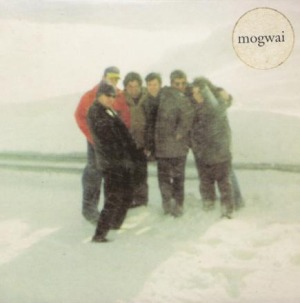
No Education = No Future (Fuck the Curfew) – Chemikal Underground, 1998
Highlights: “Xmas Steps,” “Small Children in the Background”
Low Points: The absence of the original version of “Helps Both Ways”
Overall: Saying “I prefer the earlier version of that track” is one of the go-to retorts for musical elitists like myself, since it’s often a passive-aggressive fuck-off to anyone who wasn’t there first. Nevertheless, there can be an underlying logic to such preferences. Sometimes a song sounds fresher, more inspired on its first recorded take. Sometimes the initial production values fit the track better. Sometimes listeners grow accustomed to the particular cues of the original take and never quite settle in with the newer version. No Education = No Future (Fuck the Curfew) presents two separate instances of this phenomenon.
The promo pressing of No Education = No Future offered three songs—“Xmas Steps,” “Rollerball,” and “Helps Both Ways”—but met legal issues before its proper release. “Helps Both Ways” featured a recording of Pat Summerall and John Madden calling an NFL game between the San Francisco 49ers and the Green Bay Packers, and sure enough, the network, the league, and the announcers take that message about “no rebroadcast without express written consent” rather seriously, even when it pertains to Scottish post-rock.
It’s a shame, since this original take of “Helps Both Ways” feels more natural than the one which appears on Come on Die Young. The familiar voices of Summerall and Madden, covering a drive helmed by Green Bay’s Brett Farve, could have drifted through the speakers from any languid Sunday afternoon in the mid-to-late 1990s. The specificity of this recording gives an impromptu feeling to the song, like Mogwai’s playing a moody, slow-core jam along to the television in between takes. In contrast, the comparatively anonymous sample from the CODY version almost immediately fades into the background behind more prominent drums and newly added horns. Given that you’ll have to download this original take of “Helps Both Ways” (cough cough) to hear it in the context of No Education, only a remarkably narrow segment of the audience would be affected by the switch, but this version was one of my first MP3s and I could never make the switch to the subsequent CODY take.
Getting back to the regularly scheduled programming, the EP’s lead-off track, the eleven-minute “Xmas Steps,” immediately gained its rightful status as one of Mogwai’s finest epics alongside “Helicon One,” “Like Herod,” and “Mogwai Fear Satan.” It patiently progresses from quiet calm to foreboding doom, from chaotic distortion back to violin-assuaged reserve. This savage dynamic range is a touchstone of the genre, but “Xmas Steps” pulls it off with a rare grace.
Much like “Helps Both Ways,” “Xmas Steps” was re-recorded for Come on Die Young (as “Christmas Steps”), and sure enough, I still prefer the No Education version. It’s a much harder argument to make, since the CODY version has crisper production and a tighter performance, but it loses the original take’s spaciousness and austerity.
If you’re sick of this version control, don’t worry: “Rollerball” is too slight of a song to earn alternate takes. It’s certainly pleasant—a crescendo-free slowcore piano ballad—but not especially memorable. You know what’s more memorable? That steaming turd of a remake of Rollerball from 2002. It’s bad news when Chris Klein and LL Cool J are expected to carry a movie.
Closing track “Small Children in the Background,” however, is memorable in the good way. A hazy lullaby with crests of whirring distortion, anchored by an affecting arpeggio, “Small Children” is one of music’s greatest consolation prizes. Mogwai being ready to slot such a great track into the EP after the legal mess over “Helps Both Ways” is rather astonishing. Much like “Superheroes of BMX,” it’s a b-side that ranks among their finest tracks.
No Education = No Future (Fuck the Curfew) may seem like a mere footnote now, given that all three tracks from the proper pressing have been added to EP + 6, but it’s hard for me not to think of how perfectly this EP maintained the momentum from Young Team. (Much like how Shiner’s Sub Pop single [“Sleep It Off” b/w “Half Empty”] did the same following Lula Divinia.) It’s not an album-length statement, but “Xmas Steps” and “Small Children in the Background” are two Mogwai classics, and the stylistic consistency for either version of the EP is impressive.
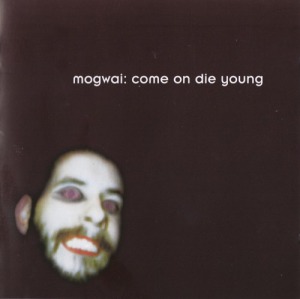
Come on Die Young – Matador, 1999
Highlights: “Cody,” “Ex-Cowboy,” “Christmas Steps,” “Chocky”
Low Points: “Year 2000 Non-Compliant Cardia,” “May Nothing but Happiness Come Through Your Door”
Overall: By the time that Come on Die Young came out in late March of 1999 (I remember the release and purchase very clearly), my Mogwai fandom was in full bloom. I’d heard a third of the album in alternate takes (“Xmas Steps” and “Helps Both Ways” from the preceding No Education = No Future (Fuck the Curfew) EP, “Cody” and “Kappa” from Peel Sessions) prior to picking up the album. I’d tracked down the aforementioned EPs and remix CDs. I was ready for another fantastic LP. Unfortunately, Come on Die Young couldn’t top Young Team.
Initially I wasn’t disappointed by Mogwai’s sophomore effort. Perhaps my prevailing misery at the time jibed with the plodding pace of the album and the absence of Young Team’s vibrant colors. But time has not been kind to Come on Die Young’s standing in Mogwai’s ever-expanding catalog. It certainly has higher production values than Young Team, but calling them better is a stretch. Producer Dave Fridmann (Mercury Rev, Flaming Lips) gives the drums a touch of the Soft Bulletin treatment and adds horns and strings, but it's such a specific sonic palette. Beyond my four favorite songs—“Cody,” “Ex-Cowboy,” “Chocky,” and “Christmas Steps,” which would have made a 36-minute mini LP—there’s a glut of mid-tempo tracks that can’t quite fill the void of dynamic range with a proper level of emotional resonance. You know that feeling in mid November when all of the leaves have fallen off the trees, the ground’s grey and frozen, and yet there’s no snow to be seen? That’s my visual picture of Come on Die Young. Sometimes I feel like November in New England, but most of the time I gaze out the window, hoping for the season to change.
At 67:32, Come on Die Young is only three minutes longer than Young Team, but it feels like so much more of an ordeal. Opening track “Punk Rock” is built around a passage from a 1977 Iggy Pop interview (somehow not this bizarre appearance), in which he claims “Punk rock is a word used by dilettantes and heartless manipulators about music that takes up the energies and the bodies and the hearts and the souls and the time and the minds of young men.” It’s not that dissimilar from the recitation of a show preview leading off “Yes! I Am a Long Way from Home” on Young Team, but there’s no lightness, no joy to follow in the song. It’s measured and serious. At least it’s an accurate signal for what’s to come.
The next song, “Cody,” is one of the album’s highlights. A rare unaltered Stuart Braithwaite vocal, “Cody” is a country-ish take on the careful ballads of slowcore bands like Low, Codeine, and Galaxie 500, with a hint of the druggy vibe of Spacemen 3 (whose “Honey” Mogwai covered and included on the Young Team reissue). The lyrics are quietly affecting—“Old songs stay till the end / Sad songs remind me of friends / And the way it is, I could leave it all / And I ask myself, would you care at all”—which makes me wonder why so few Mogwai songs take this approach. The lap steel guitar is an essential addition, a marvelous extension of the glockenspiel and flute touches from Young Team. It should be no surprise this song remains in their set lists.
The next six tracks are patience-testing, mid-tempo plodders. If they’d been spread around the album and trimmed by one or two, the casual beauty of “Helps Both Ways” and “Waltz for Aidan” would be stand-outs, but instead they’re lumped into this tedious exercise. It’s a 27-minute block without a significant crescendo. I fully understand that post-rock can succeed without wall-shaking bursts of noise, but the tense strumming of “Year 2000 Non-Compliant Cardia,” “Kappa,” and “May Nothing but Happiness Come Through Your Door” is a brutal tease of an anti-payoff. If you’re going to repeat a trick, make it a good one.
The next three songs salvage Come on Die Young to a certain extent, but they also represent another critical sequencing error: the album’s three longest (and best) songs come in a row. “Ex-Cowboy” rides its mesmerizing bass line through two crescendos of blistering guitar noise. Do you know how much I missed blistering guitar noise? So very much. “Chocky” locates an elongated piano-driven mid-tempo track within the welcome haze of atmospheric noise. And “Christmas Steps,” best version or not, is still a jaw-dropping execution of post-rock’s most primal notions. The woozy two-minute closer “Punk Rock / Puff Daddy / Antichrist” is a drifting recapitulation of the opening track. It makes structural sense but isn’t essential.
Mogwai followed the wrong instincts in by mirroring Young Team’s length but not its balanced structure and varied songwriting. It’s hard not to wonder what might have been, especially after encountering the working track listing for Come on Die Young on the long-running Mogwai fan site Bright Light: “Chocky / “Cody” / Untitled / “Ex-Cowboy” / “Christmas Steps” / “Punk Rock” / “Helps Both Ways” / Untitled. Three specific songs were mentioned as possible b-sides—“Kappa,” “Waltz for Aidan,” and “Oh! How the Dogs Stack Up”—all of which were eventually placed within the mid-album bloat. Envisioning Come on Die Young as a single album with better pacing and fewer mid-tempo tracks is tantalizing, making me itch to revive that Stylus Magazine meme Playing God. (Ian Mathers did one for Young Team and it’s hard for me to control my rage over it right now. Breathe. Breathe.) Yet their next three full-lengths demonstrate that there’s a certain appeal to the unbridled sprawl of Young Team and Come on Die Young. The grass is always greener on the other side in Glasgow.
|
|
Welcome to part two of Mogwai Discographied. If you missed part one, you can read about Ten Rapid and 4 Satin here. This time I cover their triumphant debut LP Young Team and the mixed bag remix collection Kicking a Dead Pig / Mogwai Fear Satan Remixes.
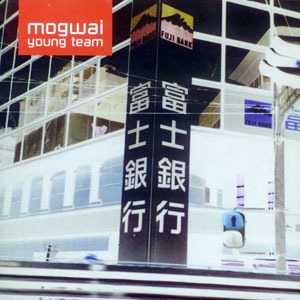
Young Team – Jetset, 1997
Highlights: “Mogwai Fear Satan,” “Tracy,” “R U Still in 2 It,” “Yes! I Am a Long Way from Home”
Low Points: “With Portfolio”
Overall: I ordered Young Team from Parasol Mail Order in early 1998, prompted by the glowing comparison to Slint. (The Cure and Sonic Youth were the other major touchstones, although far less tempting for me.) Like many of my music purchases at the time, I hadn’t heard a note of Mogwai’s music prior to receiving Young Team. My first taste was its opening track, “Yes! I Am a Long Way from Home,” which begins with Mari Myren reading snippets of a show preview from Bergen, Norway—Mogwai’s first gig outside of the UK. Here’s the transcription, courtesy of the unofficial Mogwai site Bright Light:
’Cause this music can put a human being in a trance-like state, and deprive them of the sneaking feeling of existing. 'Cause music is bigger than words and wider than pictures. If someone said that Mogwai are the stars, I would not object. If the stars had a sound, it would sound like this. The punishment for these solemn words can be hard. Can blood boil like this at the sound of a noisy tape that I've heard? I know one thing, on Saturday, the skies will crumble together with a huge bang to fit into the tape.
Let me be perfectly honest. If I heard a band’s debut album in 2010 and the beginning of their first song essentially stated “Holy shit your mind is going to be blown,” it would be awfully hard for me to listen to that record objectively. Yet my seventeen-year-old self was far less cynical, so my response to that opening passage was awe and anticipation, not revulsion. And here’s the key: “Yes! I Am a Long Way from Home” backs these words up. Damon Aitchison’s melodic bass line eases the song in from that spoken word introduction, then effortlessly navigates the crescendo. The guitars chime harmonics and carefully prune feedback before opening up with layers of shimmering, back-masked tones. Martin Bulloch’s drumming is bolstered by rhythmic clatter off in the distance. In comparison with Ten Rapid, Young Team is shot in glorious Technicolor.
It’s followed by the first of Young Team’s two mammoth compositions, “Like Herod,” which went by the apt working title of “Slint.” To call it a “live staple” is an understatement: live versions of “Like Herod” have appeared on four separate Mogwai releases. Its closest kin in Slint’s catalog is the untitled 10"—“Like Herod” is a cross between the uneasy tension of “Glenn” and the chaotic noise of “Rhoda.” As an example of the extreme quiet-loud dynamic, “Like Herod” is peerless, but it lacks the mesmerizing sense of melody that Mogwai deliver elsewhere on Young Team.
Despite not owning Young Team on LP, it’s easy to think of it as a double LP with proper sides of vinyl, especially the next three songs. The moody and atmospheric “Katrien” buries a conversational monologue within its tidal movements, but certain phrases pop up with clarity, specifically “I can no longer see, hear, or feel anything / I can see, hear, and feel everything simultaneously” during the song’s most pressing quiet segment. It’s followed by “Radar Maker,” the first of three shorter, piano-based compositions that act as buffers between the major compositions. “Radar Maker” is the quietest of the three, a restrained solo recital with echoes off in the distance. It simmers things down for the inviting melancholy of “Tracy,” which turns two prank calls involving a fake argument between Braithwaite and Aitchison into bookends for a restrained drama scored by a poignant glockenspiel melody and blurred guitar.
It’s not surprising that some material from Ten Rapid would be reconstituted for Mogwai’s proper debut LP, but “Summer (Priority Version)” is dramatically different from the original take. The dynamic range is similar, but the Young Team version is downright claustrophobic, filling out the open space of the Ten Rapid take with a dense arrangement of knotty guitars. Mogwai apparently think this version is rubbish (Braithwaite: "I think that we must have been on crack when we wrote it because it's crap"), but I’ll vouch for it as a natural part of the album. Whether I’ll do the same for “With Portfolio” remains unclear. It juxtaposes a minute of gentle piano with an onset of frantically panning noise, testing listeners’ patience and cranial fortitude. It is not a song I want to hear every time I play Young Team, but along with “Like Herod,” it’s the best indicator of the noise terror of their live shows. (It also works wonders in clearing out an ice arena after open skate.) Whether it’s more of a palette cleanser or an ipecac before “R U Still in 2 It” is up for debate, but it certainly wipes the slate clean before Young Team’s lone proper vocal. “R U Still in 2 It” marks Mogwai’s second collaboration with Arab Strap vocalist Aidan Moffatt (following “Now You’re Taken” from the 4 Satin EP). The delay-heavy guitar line, bass harmonics, and resonant piano chords ache with Arab Strap’s signature misery, but it’s the switch between Moffatt’s spoken verses and Braithwaite’s lonely chorus that locks the song in memory. What starts as a sing-along for a pub full of sad bastards—“Will you still miss me when I’m gone? / Is there love there even when I’m wrong?”—turns into a solemn admission by song’s end.
“A Cheery Wave from Stranded Youngsters” is the fullest of the three interstitial piano pieces, beginning with an enthusiastic count-off (“1 2 3 4 5 6 7 8 / 1 2 3 4 5 6 and on you go!”) and drenching its droning chords and cymbal washes in plenty of reverb. Make no mistake, however—this song works best as a lead-in for Young Team’s final track.
And what a final track it is. “Mogwai Fear Satan”is a towering post-rock epic that was immediately revered as a classic of the genre (and rightly so). As I mentioned in my review of Fuck Buttons’ Tarot Sport, “Mogwai Fear Satan” is the purest source of musical transcendence I know, a direct mode of transportation to a lush, idealized vision of the Scottish Highlands (or wherever else your mind’s eye takes you). I’ve never been able to accurately relate how “Mogwai Fear Satan” makes this trip happen, since its sixteen minutes are comprised of simple, tangible elements: an ascendant three-chord progression, Martin Bulloch’s fevered drumming, swells of feedback, bursts of distortion, Shona Brown’s flute, and the distant patter of tribal drums. Specific moments within the process are citable—the initial overdrive stomp at 1:45, the rapturous lull at 3:30, the stratospheric ascent at 5:18, the glorious euphony at 9:00, the woozy noise at 14:22—but the whole arc is required. “Mogwai Fear Satan” isn’t just my favorite Mogwai song, it’s one of my top five songs ever.
With such overwhelming praise for a single track, making the argument that Young Team remains Mogwai’s best album would appear to be an impossible task. But these ten tracks form a cohesive, exciting listening experience. Between the blissful overture of “Yes! I Am a Long Way from Home,” the tense, dynamic explorations of “Katrien” and “Summer (Priority Version),”the haunting lulls of “Tracy” and “R U Still in 2 It,” the table-setters of “Radar Maker” and “A Cheery Wave from Stranded Youngsters,” and the monoliths of “Like Herod” and “Mogwai Fear Satan,” there’s a welcome compositional variety. More than anything else, Young Team thrives on a sense of exploration that later Mogwai albums lack. Here, they write the songs necessary to fill in the big picture, later they write Mogwai songs necessary to fill in the big picture. That’s a small but critical difference, one that will keep coming up with albums like Happy Songs for Happy People and Mr. Beast.
One footnote: Given its stature (and original US pressing on Jetset), Young Team earned a 2CD/4LP reissue from Chemikal Underground in 2008. In addition to remastering the quiet mix of the original pressing, the bonus disc added nine tracks of rarities and live tracks. Come on Die Young or the Mogwai EP than Young Team. “I Don’t Know What to Say” is an ambient mix of conversation samples and unobtrusive noise, excavated from the Radio 1 Sound City compilation. “I Can’t Remember” is a claustrophobic mix of piano, drum loops, and guitar that never breaks the tension. Their cover of Spacemen 3’s “Honey,” originally included on 1998’s A Tribute to Spacemen 3 alongside Low, Arab Strap, Accelera Deck, and others, displays an occasional tendency (seen next on Come on Die Young’s “Cody” and their Peel Session cover of Guns n Roses’ “Don’t Cry”) and surprising aptitude for vocal-driven romanticism. It’s the highlight of the bonus tracks. The remaining five songs are live recordings of “Katrien,” “R U Still in 2 It,” “Like Herod,” “Summer (Priority Version),” and “Mogwai Fear Satan.” Only “Katrien” and “Summer (Priority Version)” don’t appear elsewhere in superior live renditions. This disc isn’t necessary, but it’s a nice reward for the die-hard proponents of Young Team like myself.
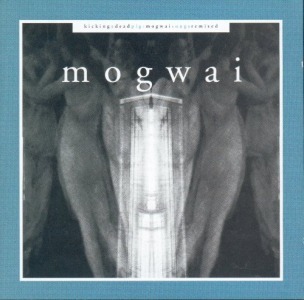
Kicking a Dead Pig: Mogwai Songs Remixed / Mogwai Fear Satan Remixes – Jetset, 1998
Highlights: Remixes from My Bloody Valentine, Mogwai, Kid Loco, and Hood
Low Points: Remixes from DJ Q, Alec Empire, and μ-Ziq .
Overall: Let me state the obvious: Kicking a Dead Pig and Mogwai Fear Satan Remixes are remix albums, so you should not expect across-the-board success. By my estimation, the average success rate for a remix album is at most 33%. A third of the songs are intriguing, but flawed. Another third are failures, either because the source material doesn’t work with the remixer’s aesthetic or because the remixer’s aesthetic is terrible to begin with. The final third gets it, and perhaps one or two of those tracks transcend the exercise and stand on their own. Allow me to test my math. There are twelve total remixes here—Mogwai’s own reworking of “Mogwai Fear Satan” appears on each disc—so in theory, there should be four in each pile. One final caveat: these discs came out in 1998, so you’re bound to encounter a boatload of dated electronic motifs.
I’ll start with the outright failures. DJ Q’s remix of “R U Still in 2 It” is the laziest of the lot, stripping the original down to its ghostly opening guitar line, then plopping a generic, club-friendly beat on top. Alec Empire’s take on “Like Herod” is a dumping ground of breakbeats apparently left over from Atari Teenage Riot. μ-Ziq’s hyperactive rendering of “Mogwai Fear Satan” piles on breakbeats, shifting synth chords, and atypical moog keyboard melodies, but nothing sticks. These three songs were downright painful to sit through.
More tracks fall under the middling, take-it-or-leave-it banner. Max Tundra’s scratchy remix of “Helicon Two” drifts through remnants of that song’s strong melodic character and a few anxious noise bursts, but doesn’t leave a lasting impression. Surgeon turns “Mogwai Fear Satan” into a buzzing drone symphony, like a denser version of Tim Hecker’s Harmony in Ultraviolet, but there’s a disappointing lack of melody. Arab Strap’s “Gwai on 45” runs through a few Mogwai songs, including “Mogwai Fear Satan” and “Katien,” but never develops a theme beyond “club sampler.” On any given remix album there’s usually at least one remix that sounds nothing like the original, but manages to sound decent enough on its own, and this time it’s Third Eye Foundation’s “A Cheery Wave from Stranded Youngsters (Tet Offensive Remix).” There isn’t even a hint of the dominant piano part from the original. Twelve years ago Klute’s “Summer (Weird Winter Remix)” would have likely been deemed a success, but its dated breakbeat exercises bring down an otherwise good incorporation of the song’s melody.
Finally, the winners. Kid Loco’s “Tracy (Playing with the Young Team Remix)” is the unanimous winner of Kicking a Dead Pig, building a late night groove from the original version’s bass line. The change in mood from the hesitant, melancholic original to the chilled-out remix is seamless, with the new drum beat and swooping electronics making an enormous difference. It’s not necessarily better than the original, but it’s close. On the other hand, Hood’s reworking of “Like Herod” doesn’t quite stand on its own, but it’s an excellent companion piece. Whereas the original relies on its brutally violent climax, the remix’s droning strings linger on the song’s tensest valleys, refusing to relieve the tension. Mogwai tend to rework “Mogwai Fear Satan” in the live setting to trim down its sixteen minutes, but their mellow, nearly ambient take is no mere edit. The first half removes the drums, letting a heavily smeared version of the song’s chord progression float until the flutes finally join the (after) party. They get to take center stage for a minute before the bass drum begins thundering in the distance. Guitar feedback eventually overtakes everything else, bringing the remix to a close. Aside from Martin Bulloch’s furious performance, every major element from the original is present, but moved around so their effects are entirely new.
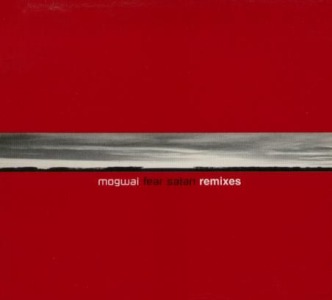
The most significant song on Mogwai Fear Satan Remixes is the My Bloody Valentine remix, both in length and in stature. At the time, a Kevin Shields remix was perceived as a tremendous endorsement, since anything new from his camp was cherished (see: his sublime version of Yo La Tengo’s “Autumn Sweater”). His remix of “Mogwai Fear Satan” is mammoth, running nearly the entire length of the original at 16:12, and it’s a masterpiece of texture. Alien guitar warbling? Check. Glorious electronic tinkling? Check. A womb-like recreation of the original’s flute lulls? Check. An eardrum-shattering blast of white noise? Check. There’s so much going on, so much to digest. The abrasive noise section is admittedly a bone likely to lodge in your throat, which is why this remix isn’t a regular listen, but I wouldn’t dare request its removal. It’s what the noise blast of “Stereodee” should have been. Of the outside remixers, only Kevin Shields fully grasped every aspect of the original song’s appeal.
Three, five, four. I promise you I didn’t tally those up before proclaiming the rule of thirds. Getting four viable remixes out of this lot is par for the course, even if the tremendous achievement of the My Bloody Valentine remix goes above and beyond. If you’re hoping for more diligent testing of this theory, don’t hold your breath; after enduring the entirety of Kicking a Dead Pig and Mogwai Fear Satan Remixes, it will be quite some time before I tackle another full remix album.
|
Heavy Vegetable – Frisbie + The Amazing Undersea Adventures of Aqua Kitty and Friends LP – Headhunter, 1995 – $14

Like many listeners, I came to Pinback without any knowledge of Rob Crow and Armistead Burwell Smith IV’s prior bands. Pinback, to their credit, doesn’t require any prerequisites for understanding or enjoying their intricately melodic indie rock, but nevertheless, Crow and Smith provide an awful lot of material for the Related If You Like column of a music review. Smith’s side is easier to collate: he’s a past and current member of San Diego indie rockers Three Mile Pilot (who now share space on Temporary Residence Limited with Pinback and have a new album out now) and strikes out on his own as Systems Officer, whose Underslept made my top 20 of 2009. Rob Crow’s catalog, however, is a bit harder to summarize.
Solo albums? Three of them. Stints in the instrumental Physics, the heavy metal Goblin Cock (as Lord Phallus), the optigon-pop Optigonally Yours, the ADHD indie rockers the Ladies? Check! Background vocals on Drive Like Jehu’s “Luau” from the classic Yank Crime? Naturally. Lead vocals on four songs from Deftones’ singer Chino Moreno’s 2005 Team Sleep album? Why yes, who else should join Mary Timony on that endeavor? There are certainly other stray examples of Crow’s prolific nature, but the branch I’m most interested in started with Heavy Vegetable. Yes, an entire branch.
Heavy Vegetable started out as contemporaries of the just-name-dropped Drive Like Jehu in the early 1990s San Diego scene, offering a unique combination of power-pop enthusiasm, math-rock time changes, and tidy hardcore song lengths set to conversational, day-to-day lyrics. A sugar-coated Minutemen, if you will. They even had a song called “Slint” on their 1993 A Bunch of Stuff EP7, which tidied that group’s post-rock dynamics into a tight two-and-a-half minutes. Following the release of The Amazing Undersea Adventures of Aqua Kitty and Friends in 1994 and Frisbie in 1995, Heavy Vegetable split up, collecting their odds and ends on the 2000 compilation Mondo Aqua Kitty. Rob Crow and singer Eléa Tenuta reconvened with a new rhythm section as Thingy, releasing the Staring Contest EP in 1996, Songs About Angels, Evil, and Running Around on Fire in 1996, and the downright excellent To the Innocent in 2000. They’ve since split up, but Crow is rumored to be finishing up a final Thingy studio album any day now. Never one to miss an opportunity, Crow formed the Other Men with the two members of Heavy Vegetable not involved in Thingy, drummer Manolo Turner and guitarist Travis Nelson, and released Wake Up Swimming in 2007. As of June 2010, that’s the extent of the Heavy Vegetable branch, but Crow’s feverish release schedule will surely date this round-up within a few months.
I can heartily recommend two starting points for Rob Crow’s seemingly endless discography beyond Pinback. First, I’ll suggest the one I semi-randomly chose back in the day: Thingy’s To the Innocent. It’s an involving mix of tight, energetic rock and delicate acoustic ballads about topics as varied as Obi-Wan Kenobi, Rob Crow’s cat, and not having any money. The carefully arranged vocal trade-offs between Crow and Tenuta should appeal to Pinback fans. Plus, unlike the Heavy Vegetable and Thingy albums released on Headhunter, it’s still in print, so the band might see a few bucks from the purchase.
If you’re willing to hit up eBay or scour LP bins (or live on the west coast, where this album is apparently still available), you can’t go wrong with this 2LP set of Heavy Vegetable’s two full-lengths. With 45 total songs spread across four (infuriatingly mislabeled) sides of lime green vinyl, winning songs fly by you at a breakneck pace. True to form, there are Star Wars drawings denoting specific song authorship and lyrics about Jackie Chan, food, and video games. The Amazing Undersea Adventures of Aqua Kitty and Friends is more aggressive and rough around the edges than Thingy, but Frisbie balances this abandon with quieting doses of acoustic guitar. It’ll take a few spins before the best songs sift their way out of this onslaught, but much like the similarly sprawling Double Nickels on the Dime, you’re likely to find a new favorite with each listen.
|
|

